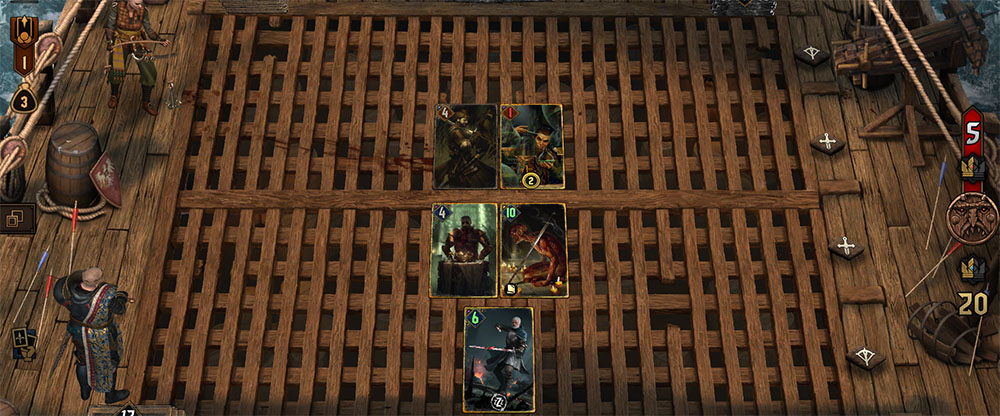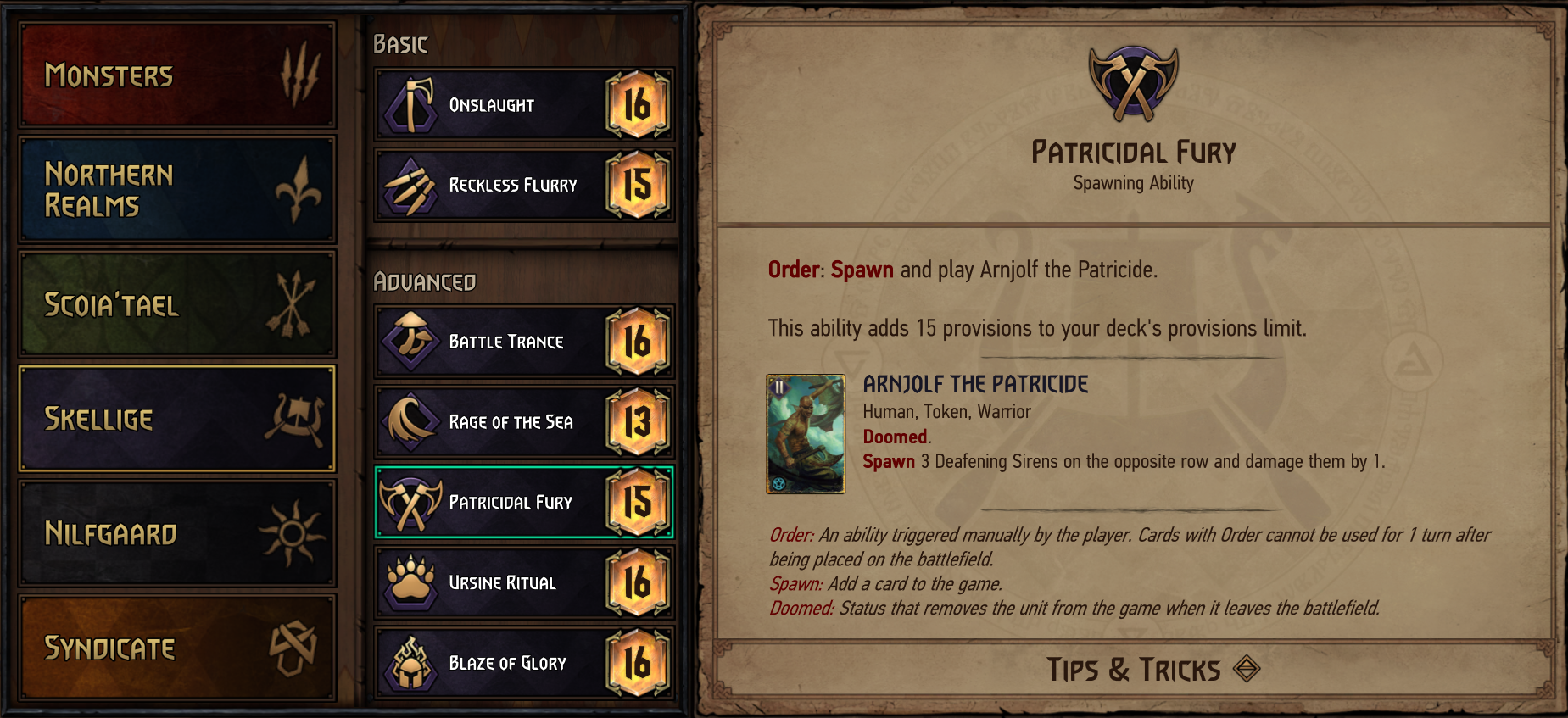
Basic Gameplay for Beginners
Welcome, Aretuza Novice, to our course Basic Gameplay for Beginners! The lessons in this course are aimed towards complete Gwent beginners. We will introduce you to the basic rules and card mechanics of Gwent. You will learn about rows, different types of cards, keywords and many other factors that make playing Gwent a unique experience. After completing this course, you will be able to play and understand Gwent, as well as move onto more detailed content that we have prepared for you in our other courses.
Contributors: Writing: lordgort & Crozyr; Review & Website: shinmiri2 & SwanDive.
Introduction
If you've played other collectible card games, such as Magic: The Gathering or Hearthstone, you already have a good background for Gwent. In this guide, we’ll discuss the key differences between Gwent and other games, plus the surprising skills that can help you succeed.
No Life Totals
First, Gwent doesn't have life totals or combat and you don't win by damaging your opponent’s hitpoints to zero. Instead, to win a game, you need to win two out of three rounds by scoring more points than the opponent. This is the single biggest adjustment you'll have to make, and this lack of life totals sets Gwent apart from most other collectible card games. If you embrace it, you'll find a new world of gameplay to explore.
Related to this lack of life totals, Gwent games don't end until all cards are played or someone forfeits. On one hand, this means you won't see many quick games, like when an aggressive Hearthstone deck smashes the opponent in just a few turns. On the other hand, you also won't see long, drawn-out control-against-control games, either.
No In-Game Resource System
Gwent allows players to play only one card per turn, but with no other restrictions. There is no system of lands like in Magic: The Gathering or the mana crystals of Hearthstone. If you want to play your most powerful card at the start of the game, nothing will stop you! The only exception are Coins, the Syndicate faction specific resource, which some cards utilize to trigger their abilities.
However, Gwent severely restricts drawing extra cards. There is no equivalent to Divination from Magic: The Gathering or Arcane Intellect from Hearthstone that lets you spend one card to draw two others. For the most part, you should not expect to gain cards in hand except between rounds, and even a one-card advantage going into Round 3 can break a game wide open.
Two Rows
Gwent's gameboard has two rows per side, and card placement is critical. Some cards have different abilities depending on where they are played. Others will affect a single row. Card placement in Gwent is tactical and has a lot in common with board games such as chess or backgammon. Check the Card Placement paragraph in the Rows lesson at the bottom of this course to learn about specific situations where card placement is important.

Gwent's board consists of four rows in total: two for you and two for your opponent. On the right side of this image you can see the point total of the current round.
The Leader Ability
Every Gwent deck starts with a leader ability, and each faction has several to choose from. Leader abilities can have a variety of effects. Your choice of leader shapes how your deck plays, and seeing your opponent's leader ability at the start of a game can tell you quite a bit about their deck.
Your leader ability also influences the amount of provisions that will be available for your deck, which we will elaborate on further down below.

The numbers next to the leader ability indicate how many provisions a leader ability adds during deckbuilding.
Provision System for Deckbuilding
Gwent decks can use only one faction's cards plus neutral and a handful of dual-faction cards. Depending on your game, this may be natural or something you must adjust to. Hearthstone has a similar restriction, for example, while Magic: The Gathering does not.
Gwent decks can have up to two copies of a bronze card, but only one of each gold card. Again, depending on the games you've played, this may sound familiar or take some getting used to.
Gwent uses a provision system to limit a deck's overall power level. During deckbuilding, each card has a provision cost, and the costs for the entire deck must be below a certain total. The provision system functions much like the point limits in miniatures games such as Warhammer or the salary cap in daily fantasy sports. Spotting a bargain is crucial!
While the the default provision limit is set to 150, each leader ability will increase this cap by a specified amount, allowing weaker abilities to be compensated by a higher level of card quality throughout your deck.
Summary
Gwent stretches the boundaries of what collectible card games can be.
- No life totals or combat system
- No resource system restricting when you can play certain cards
- Two rows for highly tactical gameplay
- Several leader abilities per faction for varied gameplay
- Provision system for unique deckbuilding challenges

Author
Green Cricket
Green Cricket is one of the heads of Aretuza, creating an environment where players and content creators can thrive and continuously improve themselves. In addition to his work at Aretuza, he runs a Gwent YouTube channel for beginners and advanced players alike. He teaches how to become better at Gwent and offers one in-depth Gwent guide each week as inspiration.
